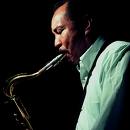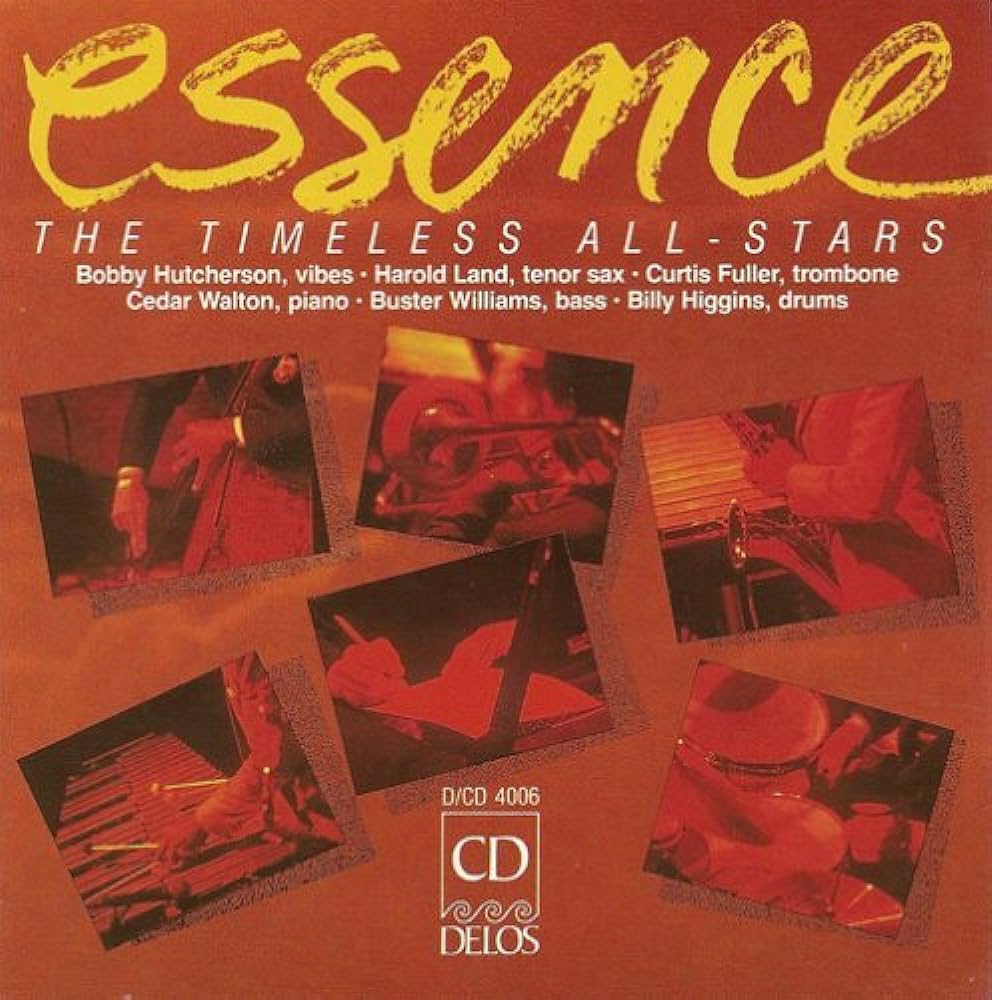Alvin's Smile – Harold Land
For this slick blues head, the rhythm section harmonizes the melody throughout with a chord for every note. Piano and bass parts are available as well as horn parts for the recorded sextet arrangement.
- Recording: Timeless All-Stars - Essence
- Recorded on: June 25-26, 1986
- Label: Delos (CD 4006)
- Concert Key: F
- Vocal Range: , to
- Style: Swing (medium)
- Trombone - Curtis Fuller
- Tenor Sax - Harold Land
- Vibes - Bobby Hutcherson
- Piano - Cedar Walton
- Bass - Buster Williams
- Drums - Billy Higgins
Video
- Description
- Historical Notes
- Solos
- Piano Corner
- Bass Corner
- Drum Corner
- Guitar Corner
- Inside & Beyond
- Minus You
Sly and slippery, this rhythmic blues head is a classic example of Harold Land’s later style. The rhythm section doubles the melody throughout, with a different chord on every note. The “turnaround” changes, essentially a tritone-subbed V of V (Dm7-G7-D♭m7-G♭7), are also played in the solo choruses as well as a chromatic “walk up” in quarter notes on the last two measures. The melody for these measures bounces off the bass notes, which anticipate an eighth note earlier.
The two choruses of both in and out head are almost identical, but the rhythm of the first measure is different. Rather than having both choruses written out, we show the rhythm for the second chorus below the staff (indicated A2) in all lead sheets and parts.
There is a pedal point intro with a piano melody. At the end of the last solo chorus, the “walk up” returns to lead back to the out head, this time with a triplet melody that outlines the rising sequence of upper structure triads.
We have a piano part and a bass part; drummers should read the lead sheet. The piano part shows all the voicings which harmonize the head; these are mostly built out of fourths. In the first eight measures the bass doubles the bottom note of the piano voicing.
About the arrangement: Second and third horn parts are available for the recorded sextet arrangement. The recording has vibes melody, tenor sax 2nd part and trombone 3rd part. These three parts are the same as the top three notes of the piano voicings. The trombone 3rd part is not always clear on the recording but we feel it should reflect the notes in the piano chords. As the harmonies are doubled by the piano, this song certainly works in a quartet setting as well without the horn arrangement.
The two choruses of both in and out head are almost identical, but the rhythm of the first measure is different. Rather than having both choruses written out, we show the rhythm for the second chorus below the staff (indicated A2) in all lead sheets and parts.
There is a pedal point intro with a piano melody. At the end of the last solo chorus, the “walk up” returns to lead back to the out head, this time with a triplet melody that outlines the rising sequence of upper structure triads.
We have a piano part and a bass part; drummers should read the lead sheet. The piano part shows all the voicings which harmonize the head; these are mostly built out of fourths. In the first eight measures the bass doubles the bottom note of the piano voicing.
About the arrangement: Second and third horn parts are available for the recorded sextet arrangement. The recording has vibes melody, tenor sax 2nd part and trombone 3rd part. These three parts are the same as the top three notes of the piano voicings. The trombone 3rd part is not always clear on the recording but we feel it should reflect the notes in the piano chords. As the harmonies are doubled by the piano, this song certainly works in a quartet setting as well without the horn arrangement.
With its rhythm section harmonization of the melody, Alvin’s Smile (named for Harold's grandson) is in a similar style to Harold Land’s earlier composition Inner Voice. Also check out Mapenzi for another song Harold recorded with the Timeless All-Stars.
"Essence" was the fourth of the Timeless All-Stars’ five albums, and their first studio album on a label other than Timeless. A week after the “Essence” sessions, Harold played in Gerald Wilson’s big band in Verona, Italy, at the Verona Jazz Festival. The recording of this performance was his last in Wilson’s band, which he had played in since its inception in 1961.
"Essence" was the fourth of the Timeless All-Stars’ five albums, and their first studio album on a label other than Timeless. A week after the “Essence” sessions, Harold played in Gerald Wilson’s big band in Verona, Italy, at the Verona Jazz Festival. The recording of this performance was his last in Wilson’s band, which he had played in since its inception in 1961.
Related Songs
Email Send Alvin's Smile to a friend
Send this page to a friend via email. Add your name or email in the first field. In the second, add one or more email addresses, separated by a comma.

Harold Land
February 18, 1928 – July 27, 2001
Many people only know of Harold Land as the great tenor saxophone soloist who made the classic quintet recordings with the Clifford Brown - Max Roach Quintet: Joy Spring, Daahoud, The Blues Walk and other classics—many of which are available from jazzleadsheets.com. Harold is far more than just a great tenor saxophonist sideman. Read more...
There was a problem.
...

